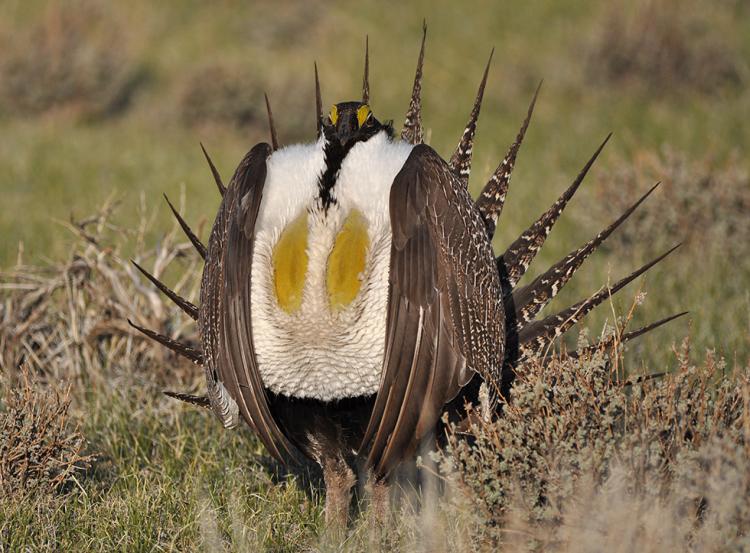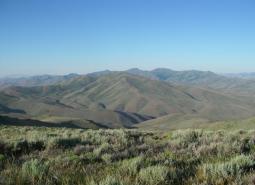Infrared Remote Sensing
Remote Greater Sage-Grouse leks (areas where males gather in a mating display for females) are the most important places to monitor this iconic species, but they can also be especially difficult to access by land. Several leks in eastern Oregon had gone several decades without monitoring, with some leks last surveyed over 20 years ago, and others having gone without a survey since the World War II era.
In spring 2015, Oregon Department of Fish and Wildlife (ODFW) biologists began testing the use of infrared technology to remotely detect birds from the air. Airplane-based infrared remote sensors can survey leks that are difficult to visit on the ground for reasons including access or extreme remoteness. ODFW contracted with Owhyee Air Research to conduct the surveys with fixed wing aircraft.
“We’re very pleased with the results, and the technology looks promising. We confirmed many leks are still active that haven’t been surveyed for decades because of access issues,” said Jackie Cupples, Statewide Sage-Grouse Coordinator.
Male counts are used as the population index, and adding visible light cameras may let biologists distinguish males from females and allow continued monitoring of remote or inaccessible leks.
VIDEO
VIDEO
Solar-Powered GPS Transmitters
More than 1 million acres of sage-grouse habitat burned in the 2012 wildfires. To see how well the birds respond to very large, landscape-altering fires, biologists fixed solar-powered GPS transmitters to 66 sage-grouse hens in 2013 and 2014.
Transmitters record up to several point locations daily which biologists can access via any desktop computer with internet access. It would be very expensive to collect similar data with conventional VHF radios that require technicians and biologists on the ground to triangulate locations, especially for birds that may move several miles in a day. The GPS point locations also improve lek location accuracy.
The majority of leks are still counted from the ground to get an index of male attendance, but the combination of IR flight and GPS transmitter data is giving biologists more tools to survey leks that are difficult to access. IR flights may also reduce risk to biologists who survey leks from helicopters that fly at low elevations in mountainous terrain.
Partnerships are key in conserving sage-grouse, and funding sources help to make these types of research projects happen. The IR flights were funded with a combination of ODFW and Bureau of Land Management funds while ODFW’s Upland Game Bird Program funded the 66 hens equipped with GPS transmitters. Funding from the Oregon Hunters Association and Oregon Wildlife Foundation will, in part, allow the project to continue with a new PhD student, technicians, and more GPS transmitters.
Greater Sage-Grouse with solar-powered GPS transmitter.


